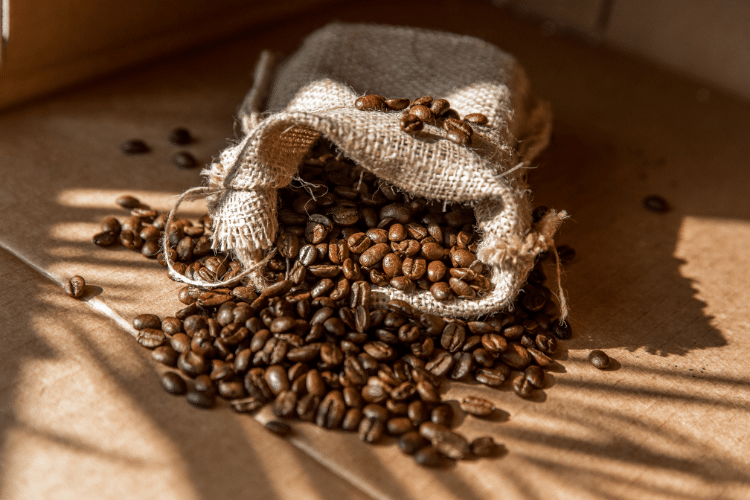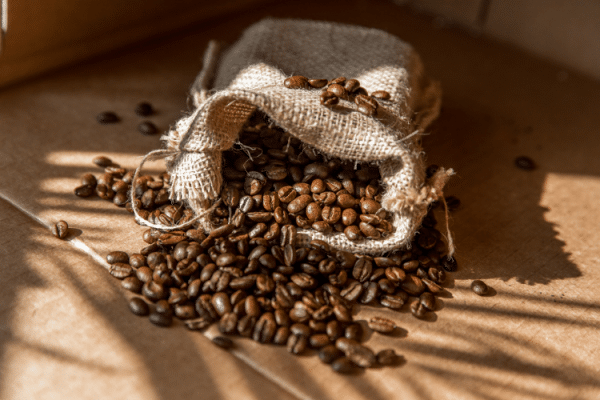Significant Drop in Coffee Prices as Brazil’s Harvesting Speeds Up
Factors Behind the Price Fluctuation: Brazil’s Accelerated Coffee Harvest
Fluctuating Coffee Market: Brazil’s Harvest Impacts Prices
In recent market activity, September arabica Coffee Prices (KCU23) recorded a substantial decrease of -6.70 (-4.25%), and September ICE robusta coffee (RMU23) also declined, closing down -52 (-1.95%).
Brazil’s Accelerated Coffee Harvest Influences Price Decline
The significant drop in coffee prices observed on Monday can be attributed to various factors, primarily the accelerating coffee harvest in Brazil, the world’s largest producer of arabica coffee. The prevailing dry conditions in Brazil have facilitated a quicker coffee harvest, leading to increased supplies and consequently exerting downward pressure on prices.
Cooxupe’s Insights and Brazil’s Harvest Progress
Cooxupe, Brazil’s prominent coffee export cooperative, reported that by August 4, the coffee harvest was 74.9% completed, surpassing the 71.7% completion at the same time the previous year.
Weather Patterns and Their Impact on Coffee Production
Somar Meteorologia, a meteorological agency, reported that the Minas Gerais region in Brazil received only 1.8 mm of rainfall last week, accounting for just 56% of the historical average. Minas Gerais contributes to about 30% of Brazil’s arabica crop, making the weather conditions a crucial factor in coffee production.
Brazilian Real’s Role in Coffee Price Fluctuations
Adding to the downward pressure, the weakness in the Brazilian real currency has further impacted arabica coffee prices. The real (^USDBRL) experienced a significant decline against the dollar, reaching a 2-1/4 month low on Monday. This depreciation encouraged export selling by Brazilian coffee producers, thereby contributing to the price decline.
Impact of Increased Brazilian Coffee Exports
The increase in Brazil’s coffee exports also contributed to the declining prices. Cecafe reported a substantial +22% year-on-year increase in Brazil’s July green coffee exports, totaling 2.7 million bags. Of note, robusta coffee exports in July more than tripled, reaching 505,153 bags.
Global Coffee Trends: Contrasting Honduras and Colombia
On a different note, Honduras, the largest coffee-producing nation in Central America, reported an impressive +63% year-on-year rise in coffee exports for July, amounting to 828,499 bags. However, there are both bullish and bearish elements affecting the coffee market. A bullish aspect is the decrease in Colombian coffee exports, with the Colombian Coffee Growers Federation reporting a -17% year-on-year decline in July exports to 846,000 bags. Colombia is the second-largest global producer of arabica coffee beans.
Supply Dynamics and Impact on Coffee Market
Additionally, the International Coffee Organization (ICO) reported a decrease of -6.2% year-on-year in global coffee exports from October to June, standing at 93.44 million bags. Furthermore, ICE-monitored robusta coffee inventories reached a record low of 4,754 lots, while ICE-monitored arabica coffee inventories hit an 8-3/4 month low of 514,305 bags. These trends indicate a tighter coffee supply situation.
Global Robusta Coffee Market: Tightening Supplies
The global robusta coffee market is also influenced by tight supplies. Vietnam’s General Department of Customs reported a -3.4% year-on-year decline in coffee exports for the first seven months of the year, with a projection of more than -7% drop in this year’s coffee harvest. This decrease is expected to be the most significant in four years. Notably, Vietnam is the world’s largest robusta coffee producer.
Market Forecasts and Weather Patterns Impact
Rabobank’s revised coffee deficit forecast for 2022/23, projecting a -6.4 million bag deficit, and Volcafe’s anticipation of a record 2023/24 robusta coffee market deficit of 5.6 million bags have supported coffee prices. The USDA Foreign Agricultural Service predicts an overall increase in global coffee production for 2023/24, along with shifts in arabica and robusta production. The influence of the El Nino weather pattern on coffee production adds another layer of complexity to the market dynamics.
Navigating an Evolving Coffee Landscape
Considering all these factors, the coffee market remains intricate and responsive to multiple forces. The evolving global coffee landscape calls for close monitoring as it navigates through supply and demand fluctuations.
Summing Up the Coffee Market Dynamics
In conclusion, the coffee market is currently undergoing a series of intricate shifts influenced by various interconnected factors. The significant drop in coffee prices, attributed to Brazil’s accelerated coffee harvest due to dry conditions, has created a noteworthy impact. As Cooxupe’s insights reveal, the progress of Brazil’s coffee harvest has outpaced the previous year’s completion rate, leading to an influx of supplies and consequently driving prices downward.
Furthermore, the weakening of the Brazilian real currency has contributed to the decline in arabica coffee prices, encouraging export selling by Brazilian coffee producers. Concurrently, the increase in Brazil’s coffee exports, particularly in robusta, has further influenced the pricing dynamics.
On a global scale, the coffee market is experiencing a tug-of-war between contrasting trends. While robusta supplies are tightening due to decreased exports and harvest projections in Vietnam, the Colombian coffee market presents a bearish scenario with decreased exports.
The supply-demand dynamics are further emphasized by the International Coffee Organization’s report on decreased global coffee exports. The decreasing ICE-monitored inventories of both robusta and arabica coffee add to the market’s complexity.
Amidst these variables, market forecasts by Rabobank and Volcafe, along with the USDA Foreign Agricultural Service’s projections, offer insights into potential market directions. The influence of the El Nino weather pattern adds an element of uncertainty and intrigue to the coffee market’s future course.
As coffee traders, producers, and enthusiasts navigate these dynamic shifts, vigilance and adaptability remain paramount. The global coffee landscape’s intricate interplay between supply, demand, weather, and economic factors requires careful observation and strategic decisions.
In this ever-evolving coffee market, staying informed and agile is crucial for all stakeholders seeking to make informed decisions and capitalize on emerging opportunities.


